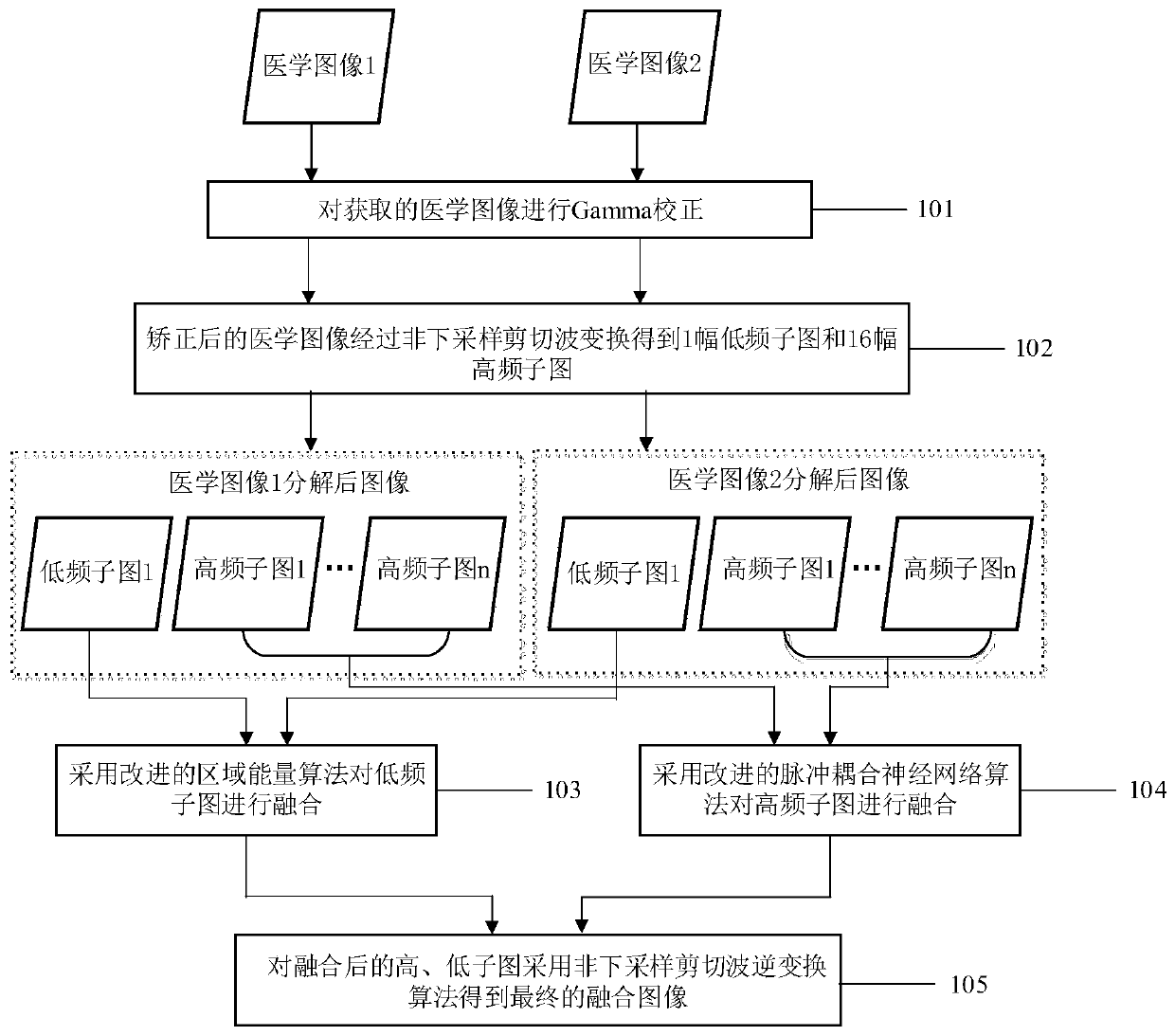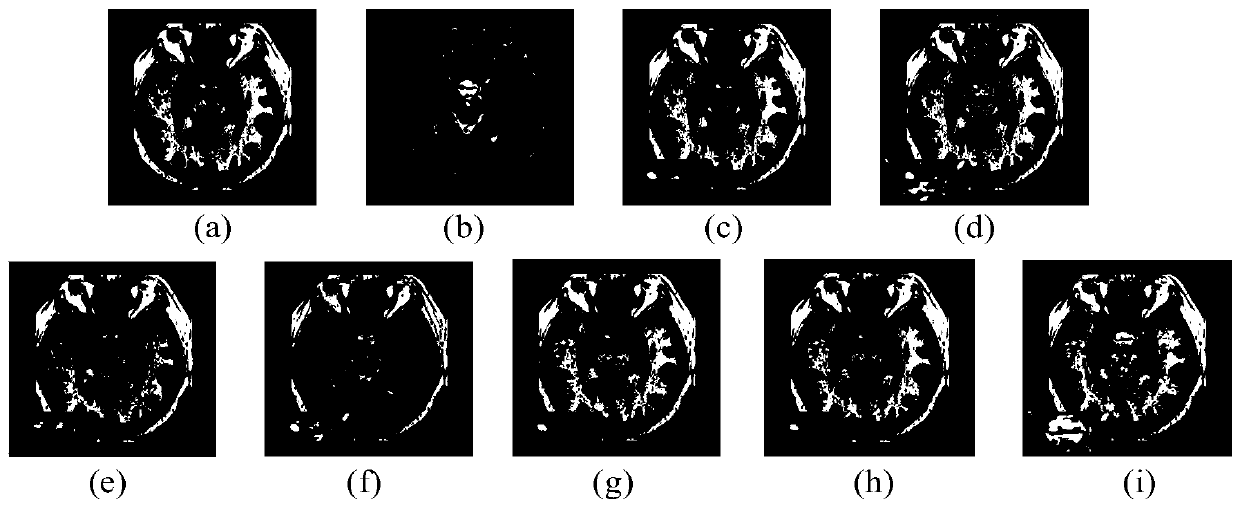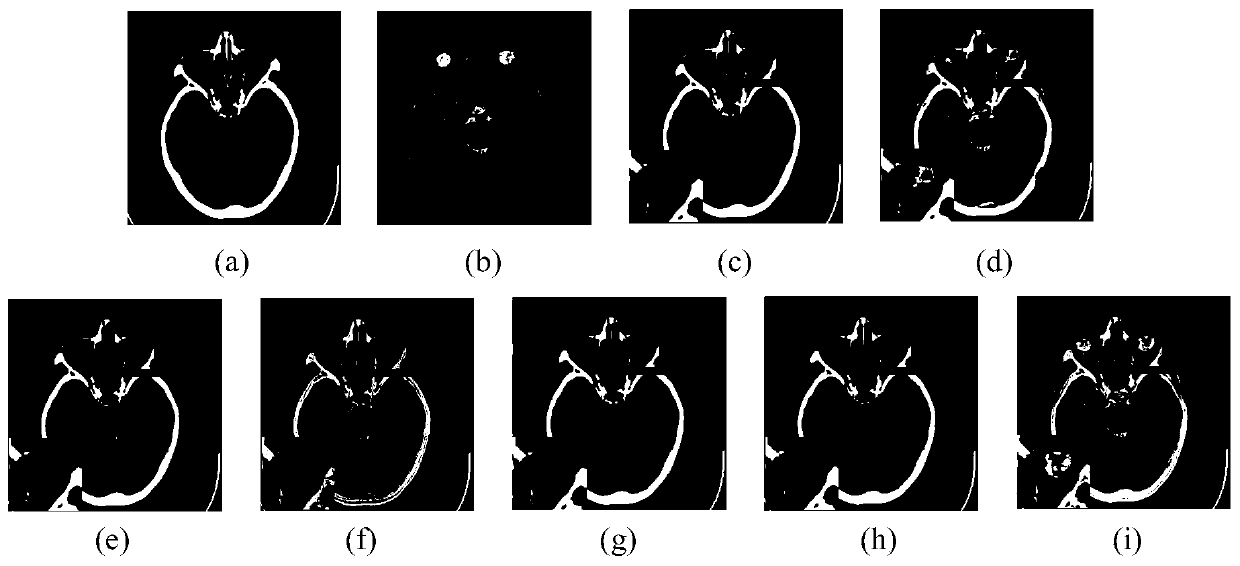Medical image fusion method based on improved pulse coupling neural network
A technology of pulse-coupling nerves and medical images, applied in the field of medical image fusion, which can solve the problems of not being able to meet medical needs, not being able to provide complete information on organs or tissue parts at the same time, and subjectively affecting the accuracy.
- Summary
- Abstract
- Description
- Claims
- Application Information
AI Technical Summary
Problems solved by technology
Method used
Image
Examples
Embodiment 1
[0150] According to the technical scheme of the present invention, two fully registered medical images are fused. This method is compared with other methods, including image fusion based on multi-scale transform method (NSCT), fusion method based on sparse representation and multi-scale transform (DTCWT-SR), fusion method based on pulse-coupled neural network and multi-scale transform (NSCT-PCNN, NSCT-SF-PCNN), dense SIFT-based image fusion (DSIFT) and boundary-finding-based image fusion (BF). All parameter settings of comparative experiments are default values.
[0151] figure 2 (a) is the nuclear magnetic resonance T1 image (MR-T1), figure 2 (b) is an MRI T2 image (MR-T2), figure 2 (c) is the fusion result graph of the BF method, figure 2 (d) is the fusion result graph of the DSIFT method, figure 2 (e) is the fusion result diagram of the DTCWT-SR method, figure 2 (f) is the fusion result map of the NSCT method, figure 2 (g) is the fusion result map of the NSCT-...
Embodiment 2
[0157] image 3 Shows a patient with cerebrovascular disease who has been attacked or stroked in the head. The patient only had writing function and lost reading function. The black box indicates the location of the eyeball in the brain, and the lower left corner of the image is a zoomed-in rendering. image 3 (a) is a CT image, image 3 (b) MR image, image 3 (c) is the fusion result graph of the BF method, image 3 (d) is the fusion result graph of the DSIFT method, image 3 (e) is the fusion result diagram of the DTCWT-SR method, image 3 (f) is the fusion result map of the NSCT method, image 3 (g) is the fusion result map of the NSCT-PCNN method, image 3 (h) is the fusion result map of the NSCT-SF-PCNN method, image 3 (i) is the fusion result diagram of this method (Proposed). According to the fusion results, it can be observed that image 3 The fused image of the BF method in (c), which mainly contains the information in the source image (a), and lacks the in...
PUM
 Login to View More
Login to View More Abstract
Description
Claims
Application Information
 Login to View More
Login to View More - R&D
- Intellectual Property
- Life Sciences
- Materials
- Tech Scout
- Unparalleled Data Quality
- Higher Quality Content
- 60% Fewer Hallucinations
Browse by: Latest US Patents, China's latest patents, Technical Efficacy Thesaurus, Application Domain, Technology Topic, Popular Technical Reports.
© 2025 PatSnap. All rights reserved.Legal|Privacy policy|Modern Slavery Act Transparency Statement|Sitemap|About US| Contact US: help@patsnap.com



